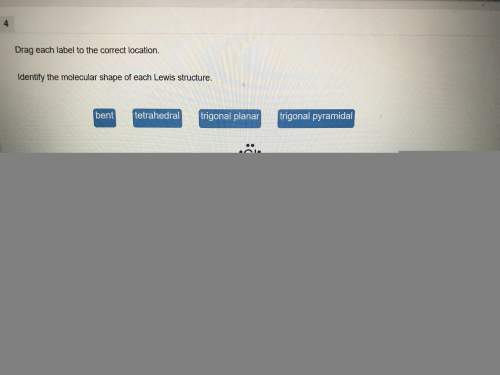
This is for a quiz can you answer all of them..??
Which statement is true regarding the ping-pong ball at the bottom of the ramp in the experiment, “Rolling Along”?
Question 1 options:
No energy was involved in this experiment.
Only potential energy from the ball coming down the ramp will be given to the ping-pong ball at the bottom of the ramp.
The kinetic energy of the ball coming down the ramp will be given to the ping-pong ball at the bottom of the ramp.
All kinetic energy remains with the ball that is coming down the ramp- none of it transfers to the ping-pong ball at the bottom.
Question 2 (1 point)
Saved
If a small car and a large truck were moving at the same rate of speed, what would be a true statement?
Question 2 options:
The car would have a shorter stopping distance.
The truck would have greater kinetic energy.
All choices shown
The truck’s mass is greater, therefore it will have a greater stopping distance
Question 3 (1 point)
Saved
When a child slides down a slide (if there is no friction and all of the mechanical energy is conserved) what would happen?
Question 3 options:
Potential energy would turn to Kinetic energy
The energy is destroyed
Kinetic energy would turn in to Potential energy
All energy stays the same
Question 4 (1 point)
Saved
When Is Mechanical Energy Not Conserved?
Question 4 options:
when the electricity is turned off
when you are in outer space
when it is cold outside
when there is significant friction or air resistance or other force affecting on the object.
Question 5 (1 point)
In which example would the most transfer of energy take place from Mechanical energy to Thermal (heat) energy?
Question 5 options:
When a child slides down a waterslide on an innertube
When a metal plate is pressing against a fast spinning piece of steel hard enough to stop it
When a feather falls from the sky
When a skydiver opens her parachute
Question 6 (1 point)
In the experiment, “Rolling Along”, which ball had the greater mass?
Question 6 options:
Golf ball
Neither ball had mass
The masses are the same
Ping-pong ball
Question 7 (1 point)
Conservation of Mechanical energy is defined as
Question 7 options:
potential energy added to kinetic energy
Energy of motion
The sum of the kinetic and potential energies of an object remains a constant value unless there are forces acting on the object that cause a loss of energy overall, such as friction and air resistance.
law of conservation of energy
Question 8 (1 point)
If a ball is rolling down the hill, what force is acting on this ball?
Question 8 options:
Elasticity
Wind energy
Chemical energy
Gravity
Question 9 (1 point)
Imagine a skateboarder rolling down a hill. As the rider travels down, the PE is turning into KE. But the rider is still slowing down. What causes this?
Question 9 options:
The rider is feeling the effects power transfer
The rider is feeling the effects of friction
The rider is feeling the effects Kinetic energy
The rider is feeling the effects potential energy
Question 10 (1 point)
What is true about the distance traveled by the ping-pong ball at the bottom of the ramp?
Question 10 options:
Neither mass nor speed had any impact on the distance traveled.
The greater the distance, the more energy the ping-pong ball had.
The greater the distance, the less energy the ping-pong ball had.
The ping-pong ball did not have any energy as it traveled short or long distances.

Answers: 3


Another question on Chemistry

Chemistry, 22.06.2019 00:30
Butadiene undergoes a reaction at a certain temperature in the gas phase as follows: 2c4h6(g) --> c8h12(g) the following data were collected for this reaction: time (min) [c4h6] (m) 0 0.36 15 0.30 30 0.25 48 0.19 75 0. determine the order of the reaction and the rate constant. 1st order and k = 4.3x10 -4 s-1 1st order and k = 2.3x10-4 s-1 2nd order and k = 4.3x10-4 s-1 2nd order and k = 2.3x10-4 s-1 zero and k = 4.3x10-4 s-1
Answers: 3

Chemistry, 22.06.2019 12:30
Clyde and marilyn are riding a roller coaster. during which section(s) of the track is their potential energy converted to kinetic energy? a. from point b to point c only b. from point b to point d only c. from point a to point b only d. from point a to point b and from point c to point d
Answers: 1

Chemistry, 22.06.2019 14:30
How do temperature and salinity affect deepwater currents? as temperatures and salinity levels of water increase, the water rises to the surface where it creates currents as it moves to colder regions. they create changes in wind direction, moving denser water in the same direction as the wind and causing the deepwater circulation patterns found in the ocean. they equalize the forces on undersea currents caused by the coriolis effect as they replace more dense water with less dense water. they create density differences that cause dense deepwater currents to flow toward the equator where they displace less dense, warmer water above them.
Answers: 2

Chemistry, 22.06.2019 18:30
When the chemicals iron sulfide (fes) and hydrochloric acid (hcl) are combined, bubbles appear from the mixture. 1. does the appearance of bubbles indicate a physical or chemical change? 2. why do the bubbles indicate this change? 3. what property is this?
Answers: 1
You know the right answer?
This is for a quiz can you answer all of them..??
Which statement is true regarding the ping-pong b...
Questions


History, 25.03.2021 18:00

Mathematics, 25.03.2021 18:00

History, 25.03.2021 18:00

Mathematics, 25.03.2021 18:00


Mathematics, 25.03.2021 18:00


Social Studies, 25.03.2021 18:00

Mathematics, 25.03.2021 18:00

Mathematics, 25.03.2021 18:00



Advanced Placement (AP), 25.03.2021 18:00





Mathematics, 25.03.2021 18:00





